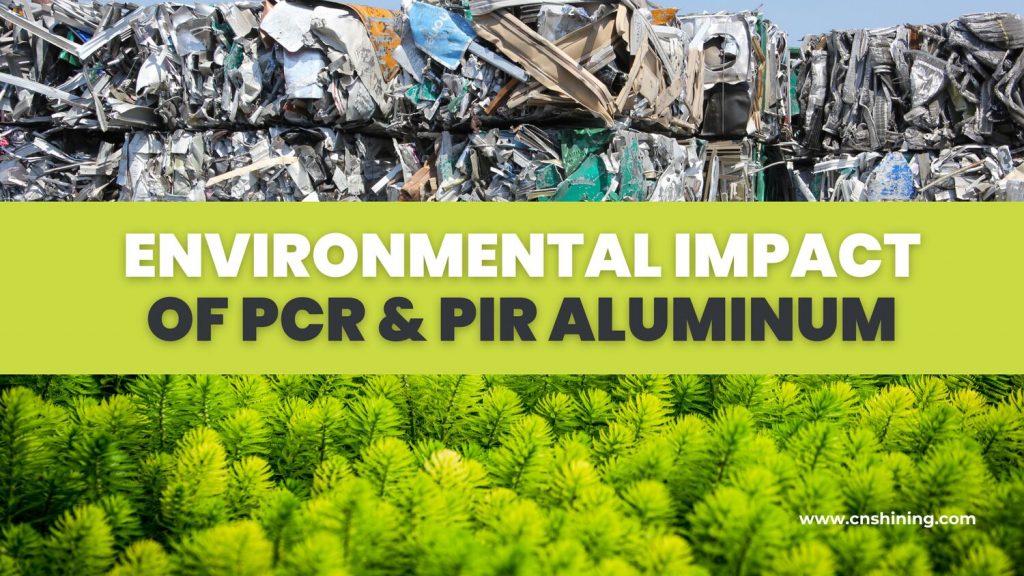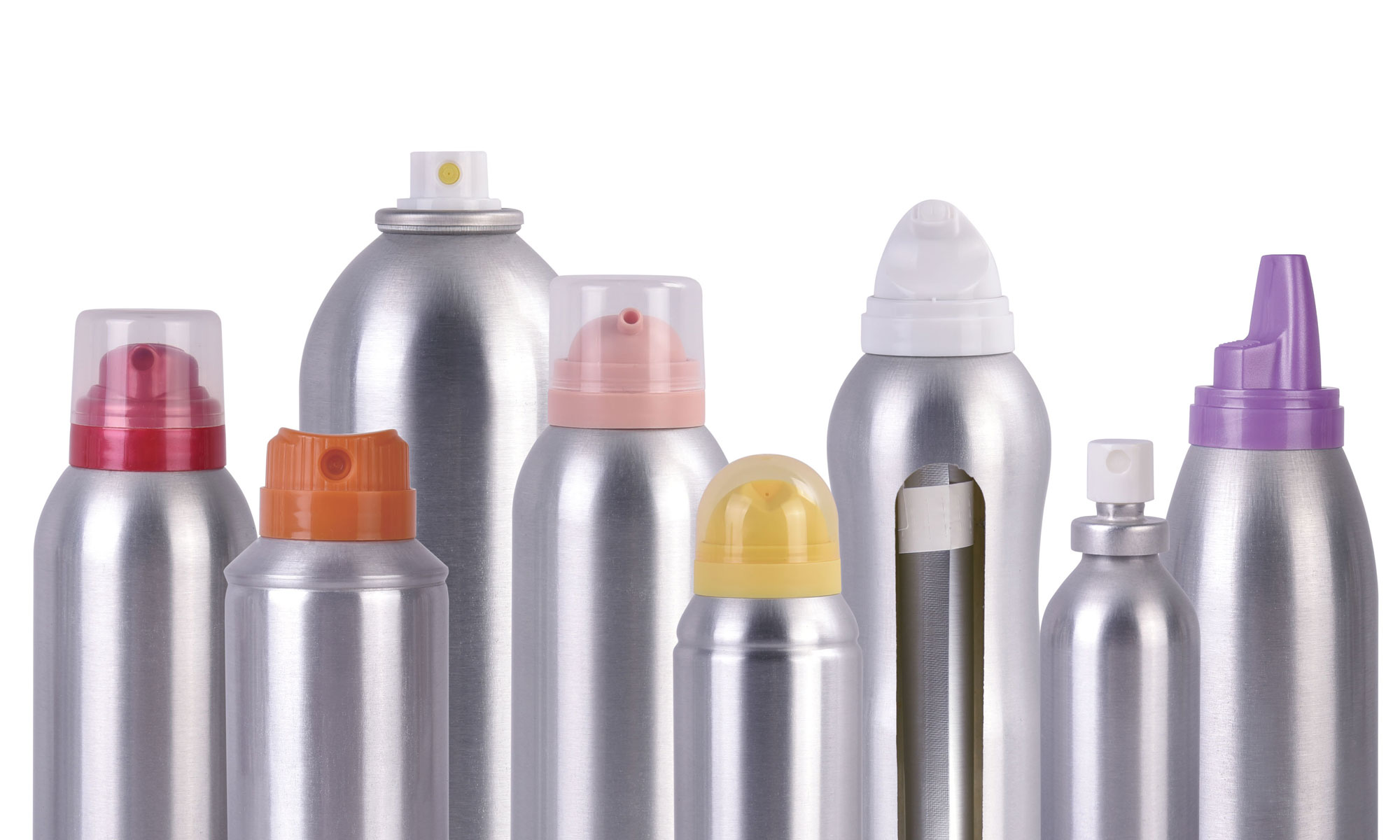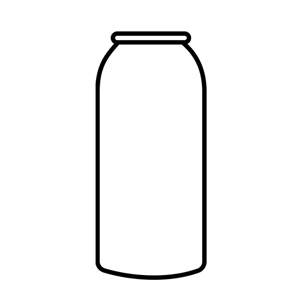
The push for low carbon aluminum packaging has positioned pir aluminum and pcr aluminum as game-changers in the production of aluminum aerosol cans and aluminum bottles. These recycled materials significantly reduce environmental impact, making them critical for achieving aerosol can sustainability. This article examines the environmental benefits of PCR and PIR aluminum, comparing their carbon footprints to virgin aluminum, quantifying their role in emissions reduction, and highlighting their contributions to a circular economy. By leveraging data and industry insights, we showcase how eco-friendly aluminum packaging supports global sustainability goals and meets the demand for green aerosol packaging.
Why Environmental Impact Matters
The aluminum packaging industry faces increasing pressure to minimize its environmental footprint. Virgin aluminum production, reliant on bauxite mining and energy-intensive smelting, generates significant greenhouse gas emissions. In contrast, sustainable aluminum cans made from PCR and PIR aluminum offer a greener alternative. Key drivers for their adoption include:
- Regulatory Mandates: Policies like China’s 2025 recycling targets and the EU’s Circular Economy Action Plan demand higher recycled content in packaging.
- Consumer Demand: A 2023 International Aluminium Institute survey found that 72% of consumers prefer products with eco-friendly aluminum packaging.
- Corporate Goals: Brands aim to achieve net-zero emissions, making recycled aluminum a strategic choice.
By reducing emissions and resource use, PCR and PIR aluminum align with these priorities, transforming the environmental profile of aluminum aerosol cans.
Carbon Footprint Comparison
One of the most compelling advantages of PCR and PIR aluminum is their drastically lower carbon footprint compared to virgin aluminum. The following table summarizes the emissions data:
| Material | Carbon Footprint (kg CO2e/kg) | Energy Use (MJ/kg) |
|---|---|---|
| Virgin Aluminum | 9.1 | 150–200 |
| PCR Aluminum | 0.8 | 10–15 |
| PIR Aluminum | 1.0–1.5 | 12–18 |
PCR aluminum emits just 0.8 kg CO2e per kilogram, a 91% reduction compared to virgin aluminum’s 9.1 kg CO2e/kg, as you highlighted in your request for a sustainability illustration. PIR aluminum, while slightly higher at 1.0–1.5 kg CO2e/kg, still offers substantial savings. These reductions stem from the lower energy requirements of recycling, which uses 95% less energy than primary aluminum production.
Reducing Emissions Through Recycling
The recycling process for pir aluminum and pcr aluminum is inherently energy-efficient, contributing to significant emissions reductions. Key factors include:
- Lower Energy Consumption: Recycling aluminum requires only 10–18 MJ/kg, compared to 150–200 MJ/kg for virgin aluminum, minimizing reliance on fossil fuels.
- Advanced Technologies: Modern furnaces with regenerative burners and smoke filtration systems reduce emissions during melting, enhancing the sustainability of green aerosol packaging.
- Reduced Mining Impact: Recycling eliminates the need for bauxite mining, which generates 3–5 kg CO2e/kg of aluminum and disrupts ecosystems.
These efficiencies make recycled aluminum a cornerstone of aluminum recycling benefits, with PCR aluminum achieving up to 95% emissions savings in aerosol can production.
Contributions to a Circular Economy
PCR and PIR aluminum play a pivotal role in advancing a circular economy, where materials are reused indefinitely to minimize waste. Their contributions include:
Infinite Recyclability
Aluminum is infinitely recyclable without losing its properties, unlike many other materials. Approximately 75% of all aluminum ever produced remains in use today, thanks to its durability and recyclability. By using pcr aluminum from consumer waste and pir aluminum from industrial scraps, the industry closes the material loop, reducing landfill waste and resource depletion.
Waste Diversion
PCR aluminum diverts consumer waste, such as beverage cans and foil, from landfills. In 2023, global aluminum recycling prevented 20 million tons of waste from entering landfills, equivalent to the weight of 2 million delivery trucks. PIR aluminum minimizes industrial waste by repurposing manufacturing scraps, further reducing environmental impact. This dual approach supports aerosol can sustainability by keeping materials in circulation.
Resource Conservation
Recycling aluminum reduces the demand for bauxite, a non-renewable resource. Producing one ton of virgin aluminum requires 4–5 tons of bauxite, while recycling one ton of aluminum saves 9 tons of CO2e and 14,000 kWh of energy. These savings make sustainable aluminum cans a critical tool for preserving natural resources and mitigating climate change.
Environmental Benefits Beyond Emissions
Beyond carbon footprint reduction, PCR and PIR aluminum offer additional environmental benefits:
- Water Conservation: Virgin aluminum production uses 15–20 liters of water per kilogram, while recycling uses less than 2 liters, preserving water resources.
- Reduced Land Disruption: Recycling eliminates the need for open-pit bauxite mining, which destroys habitats and generates toxic waste.
- Lower Air Pollution: Recycling produces fewer particulate emissions and sulfur dioxide, improving air quality near production facilities.
These benefits enhance the appeal of eco-friendly aluminum packaging for industries like cosmetics, pharmaceuticals, and household products, where sustainability is a priority.
Challenges in Maximizing Environmental Impact
While PCR and PIR aluminum offer significant environmental advantages, challenges remain:
- Collection Efficiency: Inconsistent recycling rates, particularly for PCR aluminum, limit the availability of high-quality recycled material. Only 50–60% of aluminum waste is collected globally.
- Contamination Risks: PCR aluminum may contain impurities, requiring energy-intensive cleaning processes that slightly offset emissions savings.
- Scalability: Expanding recycling infrastructure to meet rising demand for low carbon aluminum packaging requires significant investment.
Industry associations like the International Aluminium Institute are addressing these challenges by advocating for improved collection systems and cleaner recycling technologies.
Real-World Impact
The environmental benefits of PCR and PIR aluminum are evident in industry practices:
- Cosmetics Sector: A major brand adopted PCR aluminum for its deodorant cans, reducing emissions by 35% and earning recognition from an industry association for sustainability.
- Pharmaceutical Industry: A medical spray manufacturer used PIR aluminum cans, cutting its supply chain carbon footprint by 20% while maintaining product safety.
- Household Products: An air freshener brand switched to sustainable aluminum cans, diverting 10,000 tons of waste from landfills annually.
These examples, supported by data from the Aluminum Association, demonstrate how aluminum recycling benefits translate into measurable environmental gains.
The Path Forward
The environmental impact of PCR and PIR aluminum is driving innovation in green aerosol packaging. Emerging technologies, such as carbon-neutral recycling furnaces and AI-driven sorting systems, promise to further reduce emissions and improve recycling efficiency. As consumer awareness grows, the demand for eco-friendly aluminum packaging is expected to surge, reinforcing the industry’s commitment to sustainability.
Conclusion
PCR and PIR aluminum are revolutionizing the environmental profile of aluminum aerosol cans and aluminum bottles. With carbon footprints as low as 0.8 kg CO2e/kg, these materials deliver up to 95% emissions savings, conserve resources, and support a circular economy. Despite challenges like collection inefficiencies, the aluminum recycling benefits of PCR and PIR aluminum make them indispensable for aerosol can sustainability. In the next article, we’ll explore market trends and the future outlook for PCR and PIR aluminum, analyzing demand drivers and innovations shaping the industry.





















